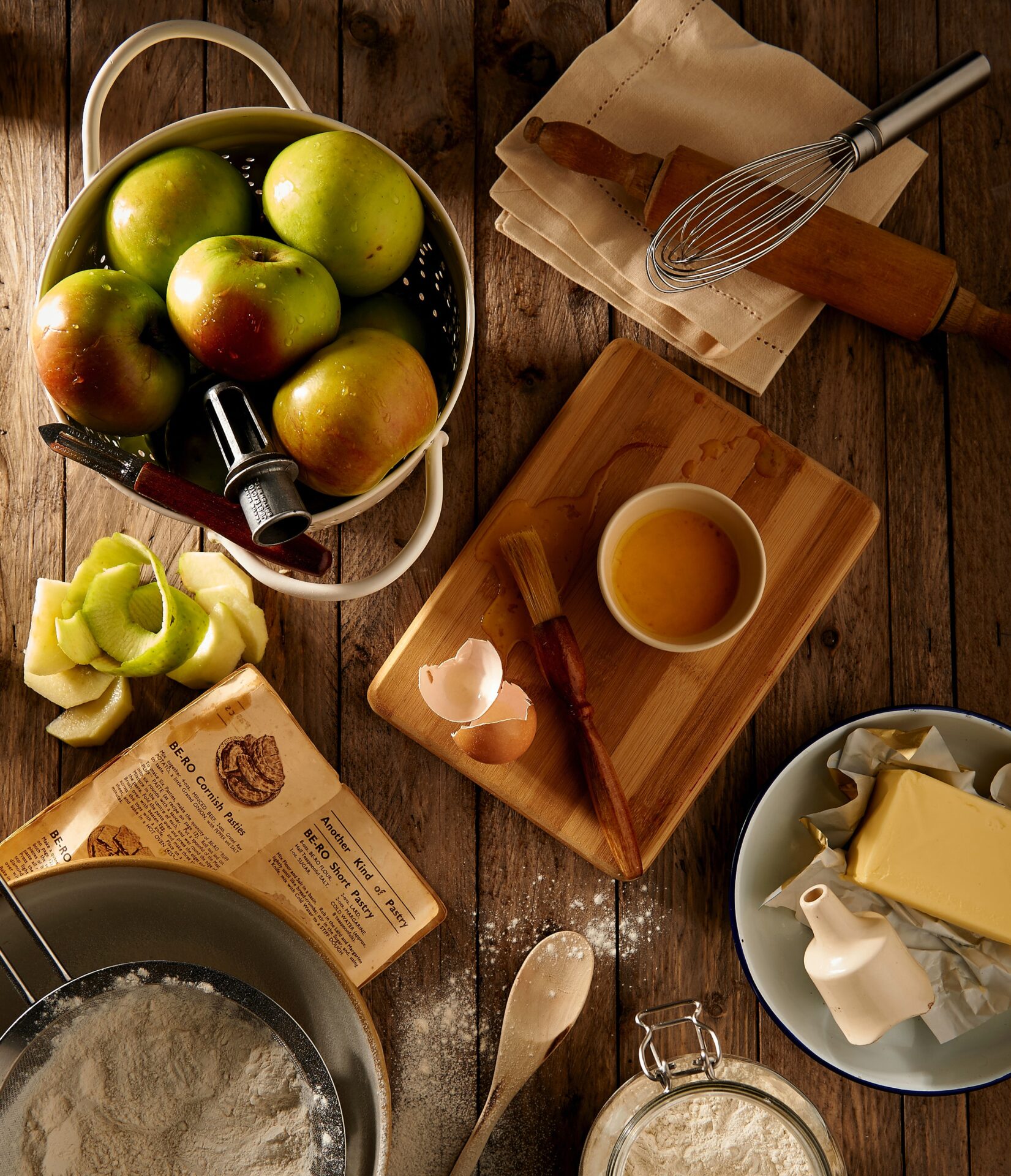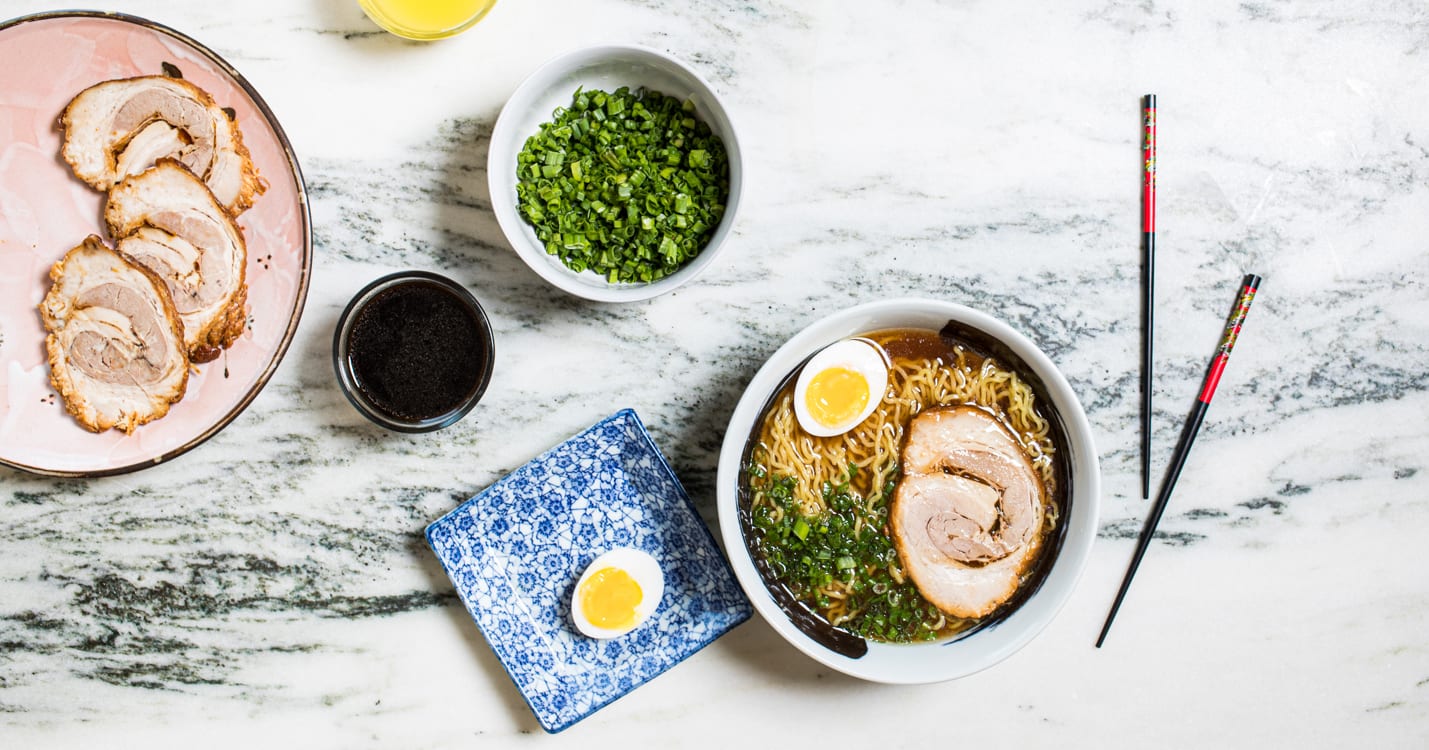Armed with little more than taste memories and YouTube videos,
Nashvillian Sarah Gavigan taught herself how to make ramen and amassed a loyal following in the process
By her own admission, Nashville chef Sarah Gavigan is more than a little obsessed with ramen. Take the name of her three restaurants—Otaku Ramen, Otaku To- Go, and Bar Otaku. “Otaku literally means ‘obsessed,’” she explains. But one need only to casually flip through her 2018 cookbook, Ramen Otaku: Mastering Ramen at Home (Avery)—in which she methodically unpacks the soulful bowl of noodles in broth—to start falling down the rabbit hole with her. To cook ramen is to be consumed by it.
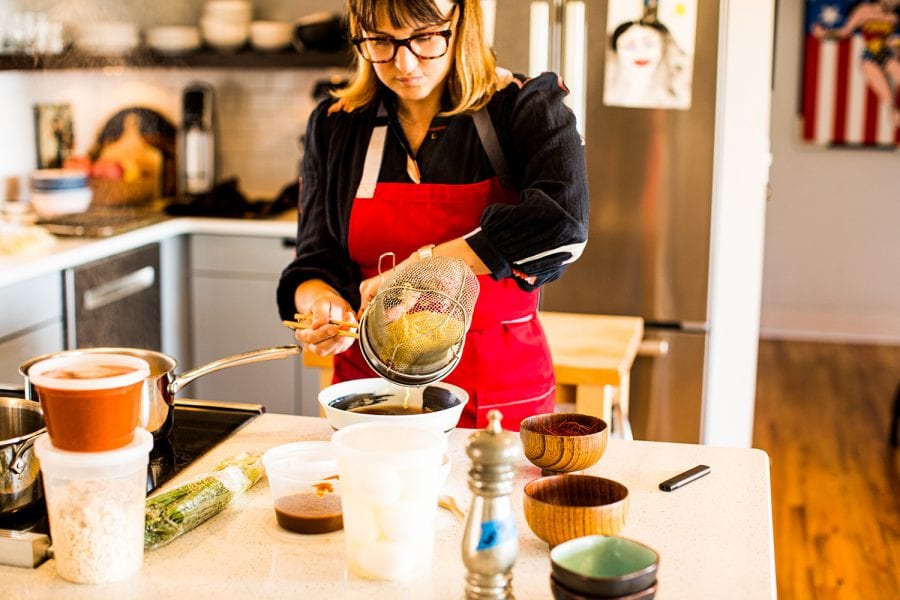
Gavigan first got hooked in Los Angeles in the late 1990s, when ramen had just landed in the United States. Born and raised in Columbia, Tennessee, about an hour south of Nashville, she spent nearly twenty years in LA working in the music industry. When she wasn’t working, she was exploring the city with a copy of Jonathan Gold’s Counter Intelligence: Where to Eat in the Real Los Angeles as a guide. And that’s when she discovered ramen. “It became my need-a-moment-to-myself food. I started out in places like Santouka, the first ramen chain in the US,” she recalls. “I would read reviews of some new ramen shop and it would become a Saturday half-day adventure to track it down and try it out.”
In 2010, as the economic downturn took a toll on the entertainment industry, Gavigan and her husband felt the pull toward home to raise their daughter in a smaller city. But after so long on the West Coast, Nashville proved to be a major adjustment for the family. And the ramen scene? Nada. The food that had once brought her so much comfort was unavailable just when she needed it the most. Eventually her cravings got the better of her and so, armed with fifty pounds of pork bones, she cooked up her first batch of broth in a stockpot on a propane turkey burner in her backyard, which eventually led her to host a pop-up dinner.
But achieving that liquid gold richness that characterizes ramen broths didn’t happen overnight. Aside from a few YouTube videos, there weren’t many reputable sources of information for making ramen. And trying to learn from Japanese chefs was difficult. “The nature of the business in Japan is secretive,” Gavigan says.
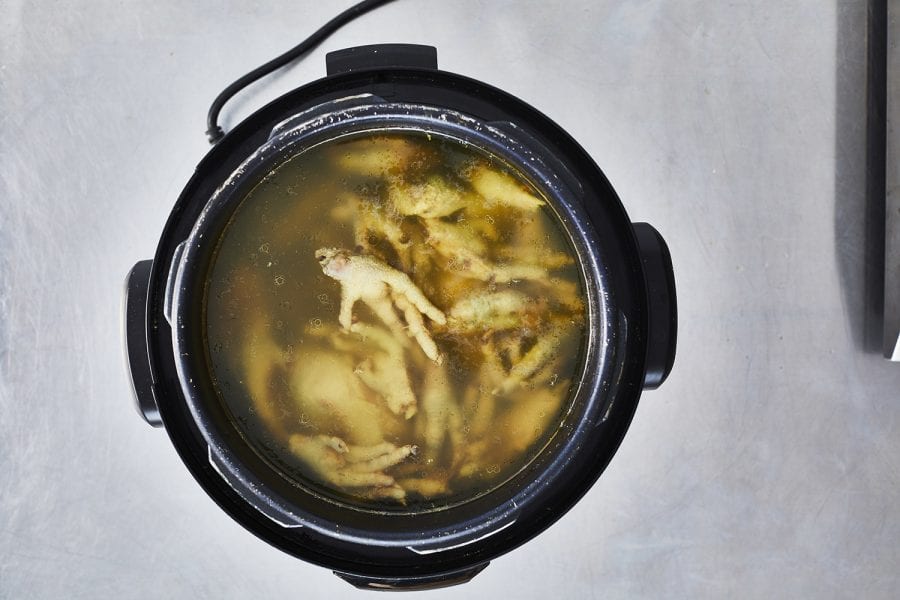
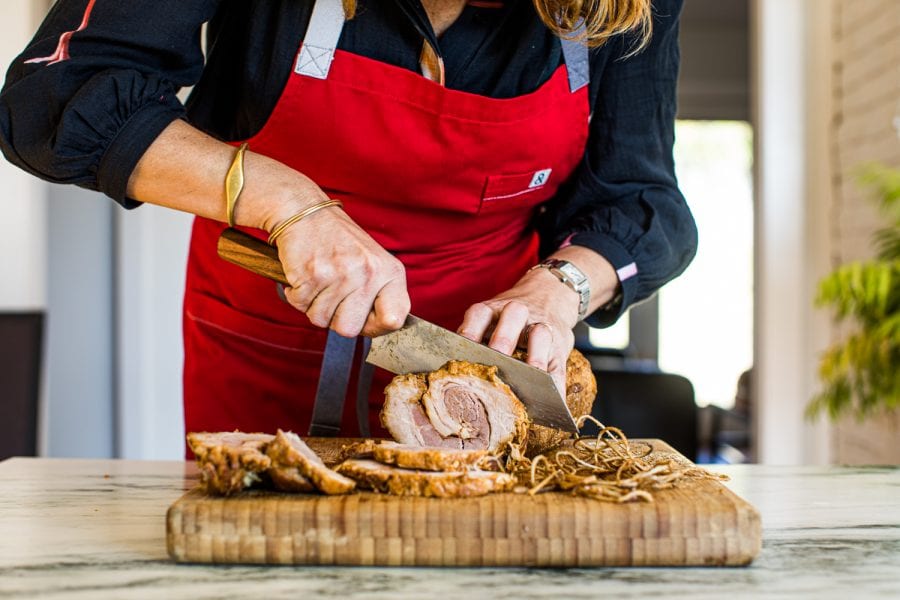
“If more ramen chefs would print their methods, we’d have a better chance to preserve their traditions.” She leaned on chefs who would reveal some of their tricks of the trade such as New York ramen master Shigetoshi Nakamura, who taught her traditional methods for making broth and how to match specific alkaline noodles to each recipe. Brooklyn chef Yuji Haraguchi of Okonomi was also very helpful to Gavigan’s ramen development.
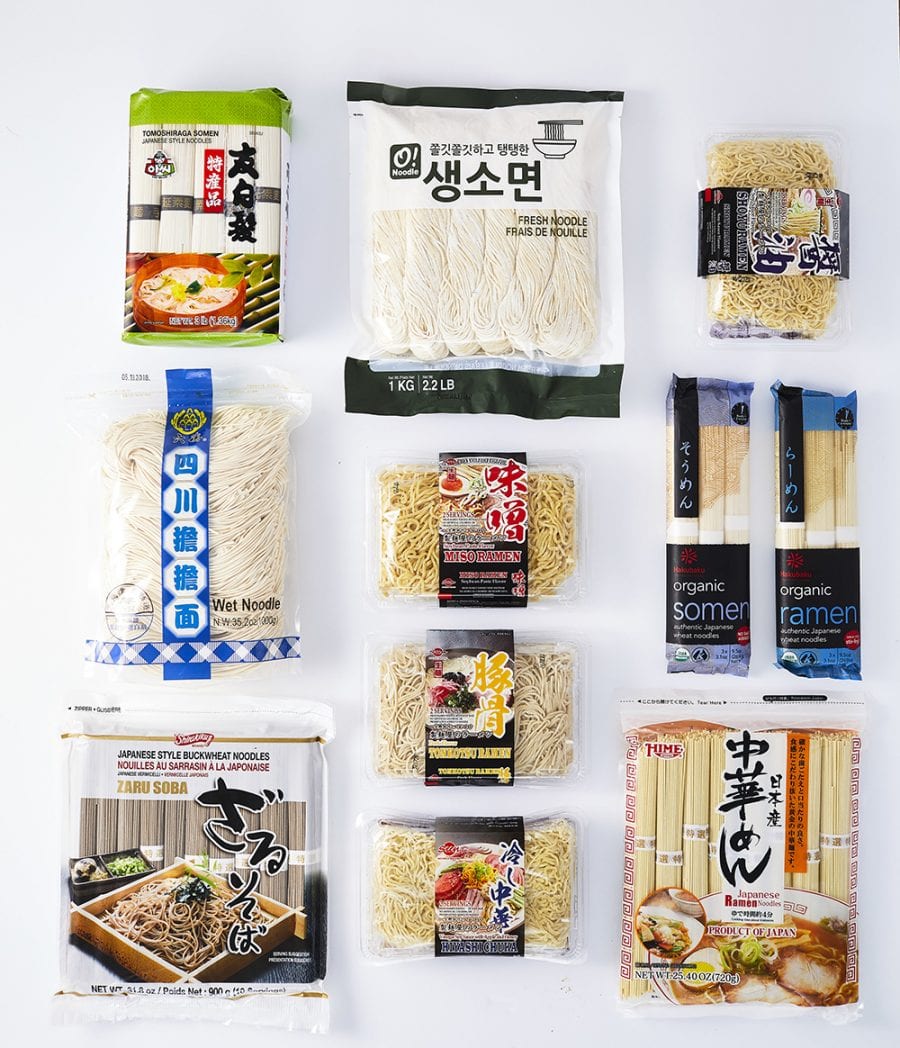
Contrary to popular belief, ramen is not an ancient dish with centuries of tradition. “The Chinese introduced the noodles to Japan, but it didn’t become popular until after World War II when the Japanese had to rebuild their country,” says Gavigan. “They had no rice after the war, and the factory workers needed sustenance. I love that they called it ‘stamina food!’”
Gavigan doesn’t claim that her ramen is authentic. “I call my restaurant a ‘traditional American ramen shop,’ because I’m not Japanese,” she says. “It’s my expression of ramen.” Her technique is the same; it’s her approach to ingredients that’s different. For example, she doesn’t use fish in her recipes anymore because its expensive and she didn’t feel it was bringing value to the customer. “We’ve come up with different ways to develop umami.”
The concept of umami—the mythical savoriness of foods like Parmesan cheese and soy sauce—is critical to ramen. “Umami is a combination of amino acids. It’s not a flavor; it’s a physical response,” Gavigan says. “A good bowl of ramen makes you happy, and now I understand why. It’s comforting, like Grandma’s chicken soup. Scientists have proved that umami triggers receptors in the brain that nothing else does.” Building umami is the basis of the recipes and techniques in Gavigan’s book. “You have to decide how important umami is to you. Maybe I shouldn’t have called it a ramen book. It’s really an umami book,” she says.
Gavigan recommends starting with chicken broth. “Ramen really only has four components: bones, water, temperature, and time. Beginners should embrace the simplicity; you only need nine ingredients in the pantry. Then you can move on to tare sauces.” Once you nail broth and tare, Gavigan encourages readers to make a bowl their own. For instance, she adds pulled pork to one of her ramens because that’s familiar to diners in Nashville. “They love it because it falls through the noodles and contributes a new texture and flavor,” she says. “Ramen is more of a theory than authenticity. It’s simple, but not easy.” And well worth the obsession.
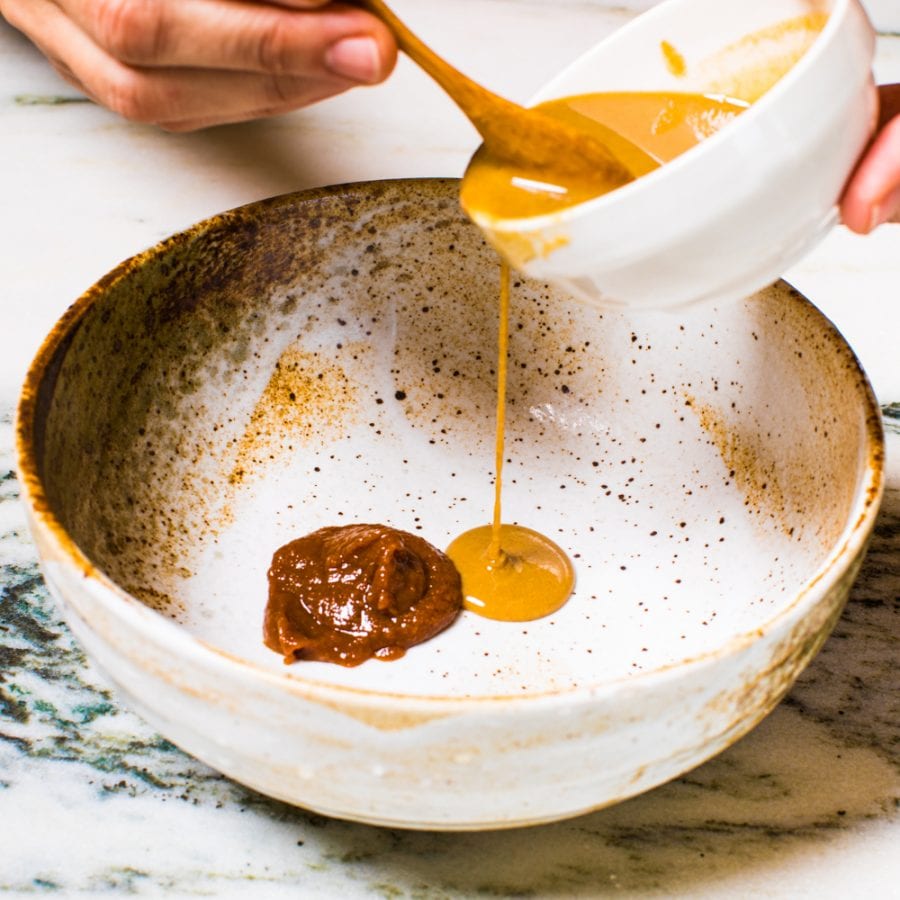
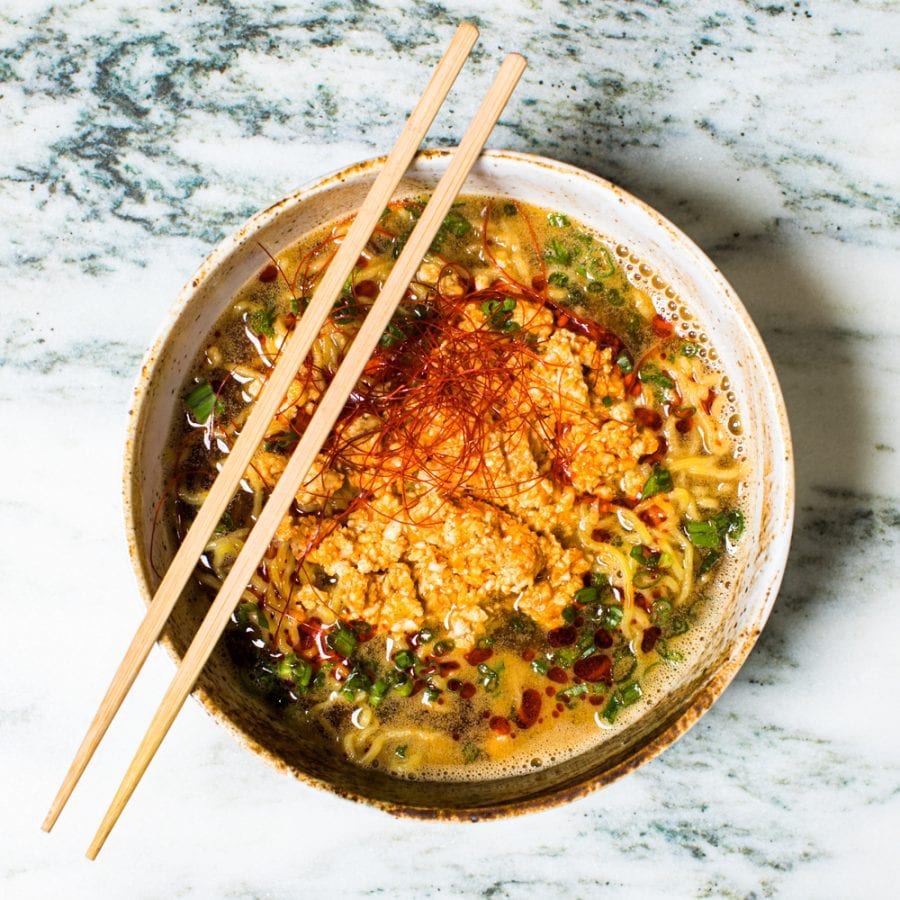


Shoyu Ramen
Shoyu ramen gets its bold umami profile from soy and dashi.

Cauliflower Tantanmen
A cousin of Chinese dan dan noodles, tantanmen is definedby its combo of sesame and chile oil. Gavignan uses riced cauliflower as a topping instead of the traditional ground pork.
Photo by Emily Dorio
THE RAMEN ARSENAL
Chashu
Sliced and rolled pork belly; one of the most iconic visuals of a great ramen bowl.
Chintan
A clear broth, as opposed to paitan, which is milky- white. It’s the hardest broth to master, but when you find the balance of salt and umami for your palate, you’ll understand why it’s worth it.
Dashi
The epitome of umami and a foundation of Japanese cuisine, dashi is the combination of water, kombu, and dried fish. This flavorless stock enhances the taste of anything you put it in. For a worthwhile shortcut, use high-quality Japanese dashi packets—which look like tea bags—or instant Japanese dashi powder.
Gochujang
This traditional fermented chile paste has a lot of depth and the right amount of spice. Mix it with miso for a spicy miso tare or with other fermented chiles to give your ramen some heat.
Katsuobushi atsukezuri
Often shortened to “katsuo,” katsuobushi are dried bonito (a type of tuna) flakes typically used for aroma. They’re very thin and bring the strongest smokiness of the dried fishes used in these recipes.
Kombu
Dried sheets of seaweed used to build umami in dashi and tares. Use the highest quality you can find. Emerald Cove brand is a good bet.
Korean chili powder
Also called Korean red pepper flake powder and Korean red pepper fine powder.
Miso
Fermented soybean or wheat paste. These recipes use a simple yellow or white miso, but don’t be afraid to try different styles in your tare. Some have dashi built in; some have more kombu in them. Red miso is fermented the longest and is much saltier than the others.
MSG
Monosodium glutamateis a modified salt. Whileit’s garnered a bad reputation in the US,it’s still a useful tool inthe kitchen—most sensitivities to it comefrom using too much. Usein small amounts for instant umami insurance.
Nori
Dried sheets of seaweed commonly used to wrap sushi. Use it as a topping in ramen bowls.
Ramen eggs
These should have a white that’s completely set with a yolk that’s almost the texture of marmalade.
Rayu
This spicy-sweet infused chile oil has become increasingly popular as a dipping sauce and ramen topping.
Sababushi atsukezuri
Oftened shortened to “saba,” sababushi is a cousin to katsuobushi. These dried mackerel flakes are milder than katsuo.
Sake
When cooking with wine, the better the wine, the better the sauce—but this rule doesn’t apply to sake. Buy the cheapest sake you can find for cooking, as it’s merely there to create balance, not for flavor or depth.
Sake kasu
This paste is derived from the rice after fermentation during sake production. It makes for incredibly well- balanced flavors.
Shoyu
Known in America as soy sauce, standard Japanese shoyu is well-rounded, while the Chinese version is more intense.
Tare
This is the backbone of a bowl of ramen—the main seasoning agent. The most common are shio (salt), shoyu (soy), and miso (fermented bean or wheat) tares, but the options are limitless. It’s laborious to make but the salt content will keep it good for up to a year in the refrigerator, so go for a big batch.
share
trending content
-
Get To Know Roanoke, Virginia
-
Shrimp and Grits: A History
by Erin Byers Murray -
New Myrtle Beach Restaurants Making Waves
-
FINAL VOTING for Your Favorite Southern Culinary Town
-
New Restaurants in Arkansas
More From At the Table
-
A Global Table
-
8 Frozen Drinks to Cool Down Independence Day
-
Pairing Wine with Pizza | Listen
-
Ready, Set, Boil: A Guide to the Iconic Southern Seafood Boil
-
10 Dad-Approved Recipes for Father’s Day


